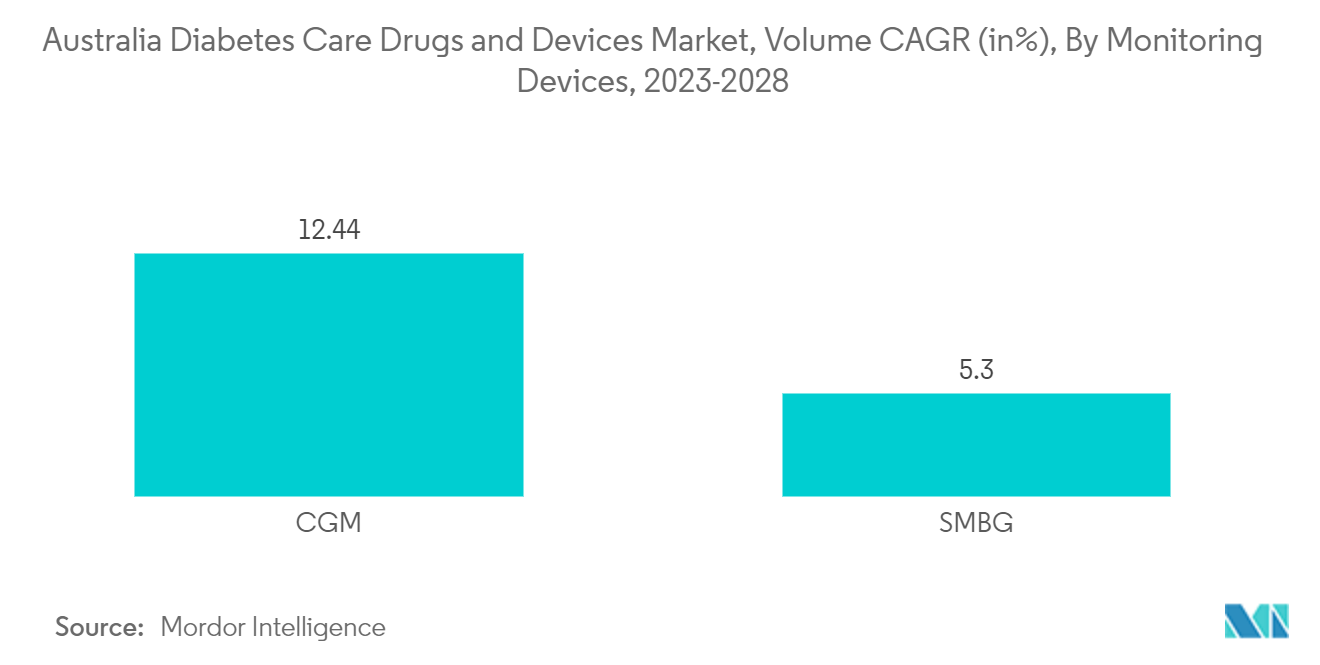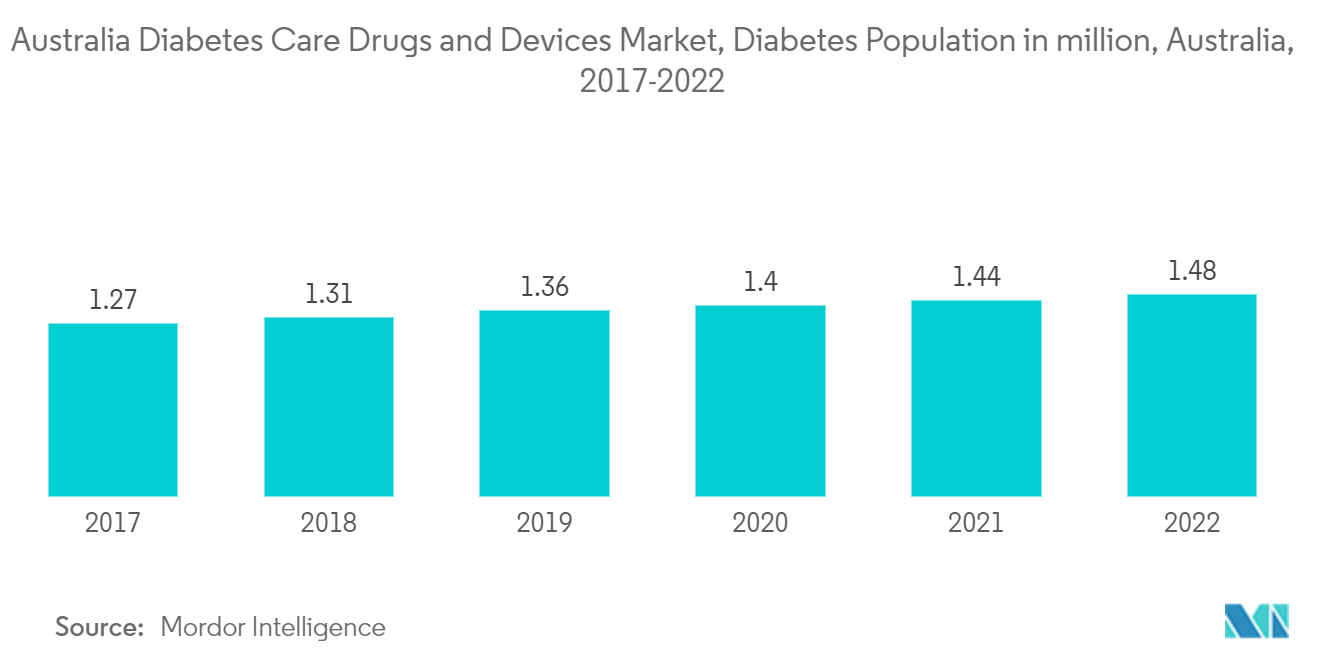Market Trends of Australia Diabetes Drugs and Devices Industry
The continuous Glucose Monitoring Segment is Expected to Witness the Highest Growth Rate Over the Forecast Period
Continuous blood glucose monitoring is a popular alternative to commercially available portable finger glucose meters for people with diabetes. Continuous glucose monitoring sensors use glucose oxidase to measure blood sugar levels. Glucose oxidase converts glucose to hydrogen peroxidase, which reacts with platinum in the sensor to send an electrical signal to a transmitter. Various promising glucose sensor technologies are being developed, ranging from traditional electrochemical glucose sensors to new optical and other electrical glucose sensors, positively impacting the market growth.
The National Diabetes Services Scheme (NDSS) is an Australian government initiative. Once the patient is enrolled in their NDSS, they can use the blood glucose monitoring product with a subsidy. Registration with the NDSS is free and open to anyone in Australia who has a Medicare card and is diagnosed with diabetes. Patients and medical team members are required to complete an NDSS registration form. NDSS supplements blood glucose strips. Patients with type 1 diabetes are eligible for subsidized FGM and CGM. In addition, current continuous blood glucose monitors can display blood glucose trends by downloading data or providing real-time images of blood glucose levels through the receiver's display. In addition, current continuous blood glucose monitors can display blood glucose trends by downloading data or providing real-time images of blood glucose levels via the receiver's display. The emergence of new technologies, such as cell phone integration, will likely make continuous blood glucose monitoring devices cheaper, boosting the field. The emergence of new technologies, such as cell phone integration, will likely make continuous blood glucose monitoring devices more affordable, boosting the field.

Rising diabetes prevalence
The diabetic population in Australia is expected to grow by approximately 2.5% during the forecast period. According to Diabetes Australia, diabetes is Australia's fastest-growing chronic disease, rising faster than other chronic diseases such as heart disease and cancer. Approximately 1.9 million Australians have diabetes, including all forms of diagnosed diabetes (about 1.5 million known and registered) and undiagnosed type 2 diabetes (up to 500,000 presumed to be human). The incidence of diabetes in children and adolescents is increasing. Nearly all children and adolescents with diabetes have type 1 diabetes. In addition, the child develops type 2 diabetes when he is young. Children and adolescents with type 1 and type 2 diabetes have unique needs, including care from a multidisciplinary childhood diabetes team, diabetes care, and access to assistive technology.
One of the main goals of diabetes treatment is to maintain blood sugar levels within specific target ranges. This can be achieved through activity, lifestyle, and a balanced diet with diabetes medications. Blood glucose monitoring readings provide the information to determine the optimal diabetes management strategy. Keeping your blood sugar within your target range can reduce your risk of developing diabetes-related complications such as diabetic retinopathy, heart disease, and kidney disease. How often people with diabetes check their blood sugar levels depends on how often they use insulin due to several factors. People with type 2 diabetes who don't use insulin may not need to check their blood sugar regularly. However, systematic self-monitoring for a period may be helpful.
Adolescents are at a higher risk of developing diabetes at an early age due to their younger age and longer duration of diabetes, which reduces the quality of life, shortens life expectancy, and increases social health expenditure. As a result, the demand for antidiabetic drugs and their approval rates are rising, which drives the market. Furthermore, with the growing awareness of people with type 2 diabetes, the need for diabetes drugs and devices is rapidly increasing.
The increasing diabetes prevalence and the above factors will likely drive segment growth over the forecast period.


